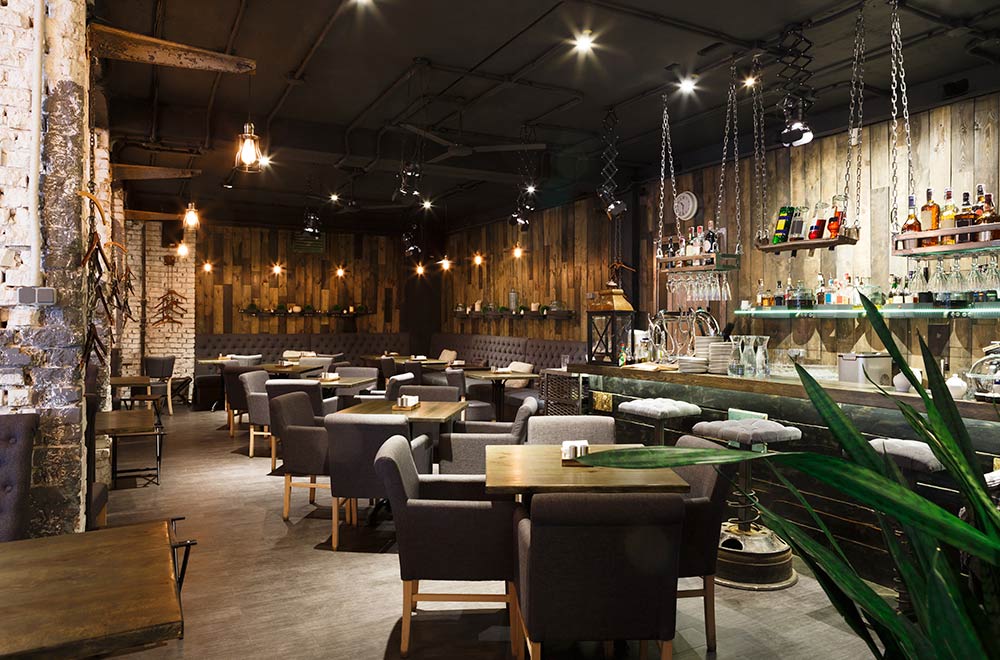Pan Asian Dining Islamabad: Relish Genuine Asian Recipes
Pan Asian Dining Islamabad: Relish Genuine Asian Recipes
Blog Article
Savor Genuine Oriental Food With a Pan-Asian Spin for a Cooking Adventure
Beginning on a cooking journey through genuine Eastern food, improved with a Pan-Asian twist, offers an unique opportunity to discover the abundant tapestry of flavors that define the area's varied culinary practices. As you consider these enticing recipes, take into consideration the cultural stories and historic impacts that shape them, each bite offering a tale waiting to be found. Fine dining experience Islamabad.

Exploring Pan-Asian Tastes
In the world of international gastronomy, Pan-Asian cuisine attracts attention for its remarkable variety and the harmonious interplay of flavors from different Oriental societies. This culinary technique celebrates the abundant traditions and special ingredients located across the continent, developing a tapestry of tastes that is both interesting and enjoyable. Trick to Pan-Asian cuisine is its capacity to balance different flavors-- sweet, salty, spicy, and sour-- while highlighting the freshness and top quality of each ingredient.
From the umami-rich soy sauce of Japan to the intense chili peppers of Thailand, Pan-Asian food provides an extensive combination of tastes. These components are typically incorporated in inventive ways, improving meals with layers of intricacy. As an example, using fragrant herbs such as lemongrass and cilantro, typical in Vietnamese and Thai cuisine, includes a refreshing brightness to meals, while the unification of coconut milk delivers a velvety, rich structure.
The focus on fresh produce and aromatic flavors ensures that each meal is not just a feast for the preference buds however also for the senses. Pan-Asian cuisine invites diners to start a culinary trip, checking out the vast and differed landscapes of Oriental gastronomy with every bite.
Combination Dishes to Try
While Pan-Asian food is commemorated for its conventional tastes, the contemporary culinary landscape is increasingly welcoming combination dishes that blend these timeless aspects with influences from other regions. This ingenious strategy not just honors the rich heritage of Asian cooking arts however also presents unique taste experiences that appeal to modern palates.
An archetype of such a combination dish is the Korean-Mexican taco, where marinaded bulgogi beef is covered in a warm tortilla, topped with kimchi and a hot gochujang-infused salsa. This mix weds the bold, mouthwatering flavors of Korea with the dynamic, fresh components of Mexican cuisine. Likewise, sushi burritos have actually gotten popularity, amalgamating the delicate virtuosity of Japanese sushi with the hearty, hand-held ease of a burrito, frequently featuring combination ingredients like tempura shrimp and avocado with a drizzle of wasabi mayo.
One more noteworthy recipe is Thai curry ramen, which instills the velvety, aromatic seasonings of Thai curry right into the calming brew of conventional Japanese ramen, developing an unified mix that tantalizes the senses. These combination meals expand beyond mere novelty; they stand for a cooking discussion in between societies, encouraging exploration and development in the globe of Pan-Asian cuisine.
Important Components and Spices
To truly appreciate Pan-Asian food, one must comprehend the essential ingredients and seasonings that form its structure. This varied culinary style draws from a rich tapestry of Eastern traditions, utilizing a harmonious mix of structures and tastes.
Aromatic aspects are essential, with lemongrass, ginger, and garlic being ubiquitous throughout numerous Pan-Asian dishes. These active ingredients give a great smelling base that boosts the complexity of flavors. Seasonings such as celebrity anise, cardamom, and cinnamon introduce warmth and personality, resembling impacts from areas like China and India.

Food Preparation Methods and Tips
Understanding the art of Pan-Asian food requires familiarity with its unique food preparation strategies, each contributing to the dynamic tapestry of tastes this cooking tradition is celebrated for. Central to happy garden these approaches is the stir-fry, a rapid cooking strategy that preserves the nutritional stability and brilliant shades of active ingredients. Utilizing a wok, the stir-fry method enables for even warm distribution, crucial for achieving the characteristic structure and flavor equilibrium of Pan-Asian recipes.
Another fundamental strategy is steaming, especially prevalent in Chinese food. This mild method keeps the natural flavors and nutrients of components, making it excellent for fish and shellfish and vegetables. Dumplings, a cherished staple, often take advantage of steaming, resulting in soft, succulent textures.
Cooking, additionally indispensable, presents great smoky depths to meals such as Korean bulgogi or Japanese yakitori (pan asian restaurant Islamabad). This technique frequently involves seasoning ingredients, permitting tastes to pass through deeply prior to cooking over an open flame or warm plate
Finally, grasping the art of balancing tastes-- wonderful, sour, salty, bitter, and umami-- is important. Effectively layering these components can boost a dish from average to remarkable, supplying a complex and satisfying cooking experience that embodies the essence of Pan-Asian cuisine.
Eating Experiences Worldwide
Around the world, Pan-Asian cuisine uses an unmatched dining experience, celebrated for its rich tapestry of tastes and lively presentations. This cooking phenomenon has actually transcended social limits, catching the hearts and palates you can try these out of food fanatics worldwide. In multicultural cities like New York, London, and Sydney, Pan-Asian dining establishments work as fusions where culinary traditions from Thailand, Japan, China, and past assemble, providing restaurants with an eclectic mix of dishes that highlight the region's variety.
The worldwide charm of Pan-Asian food hinges on its capacity to offer both authenticity and advancement. Cooks masterfully marry standard active ingredients such as lemongrass, soy sauce, and miso with modern methods, causing recipes that are both refreshingly new and familiar. This blend enables restaurants to start a cooking journey that values heritage while embracing modernity.
In addition, dining experiences are raised through thoughtfully developed environments that mirror the principles of Pan-Asian aesthetic appeals. From minimalist Japanese-inspired interiors to dynamic Thai-themed spaces, each restaurant uses a distinct atmosphere that enhances the cooking offerings. Therefore, patrons are not merely consuming a dish but partaking in a cultural experience, making Pan-Asian eating a truly international sensation.
Final Thought
The exploration of Pan-Asian food uses a profound understanding of the elaborate interaction of tastes and culinary traditions throughout Asia. By welcoming blend recipes such as Thai curry ramen and sushi burritos, the culinary journey not only highlights the flexibility of typical components but also showcases ingenious modern techniques. This gastronomic experience, enhanced by vital flavors and cooking methods, supplies a special opportunity to value the multiculturalism and cooking artistry that specify Pan-Asian cuisine on a global scale.
Embarking on a cooking journey via authentic Eastern cuisine, enhanced with a Pan-Asian spin, supplies an one-of-a-kind possibility to explore the abundant tapestry of flavors that specify the area's diverse culinary traditions.In the realm of worldwide gastronomy, Pan-Asian food stands out for its impressive variety and the harmonious interplay of flavors from numerous Asian cultures. Key to Pan-Asian food is its capacity to stabilize contrasting flavors-- sweet, salted, spicy, and sour-- while highlighting the click over here now quality and top quality of each ingredient.

Report this page